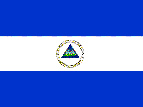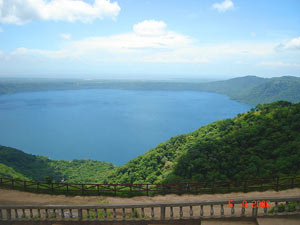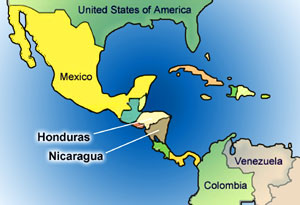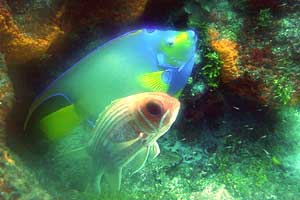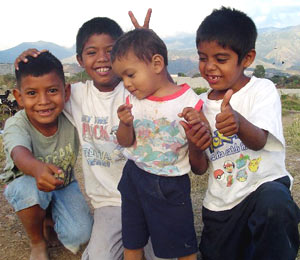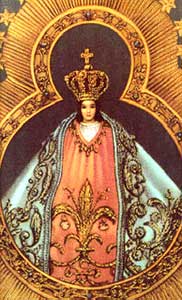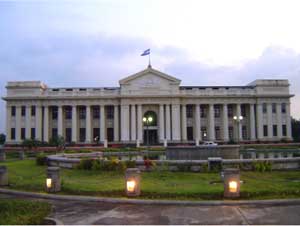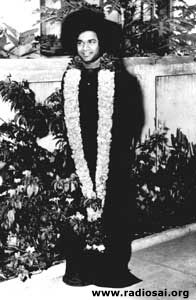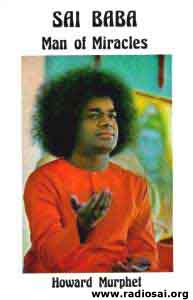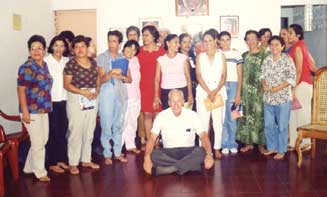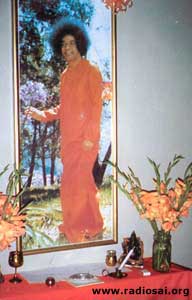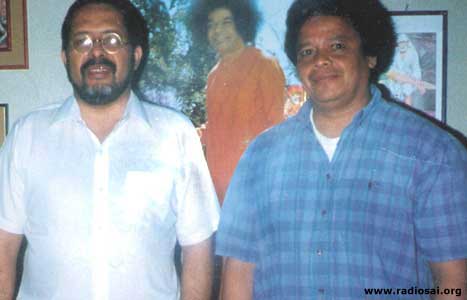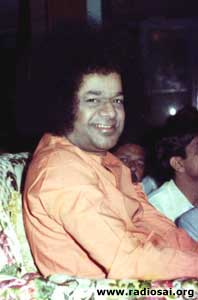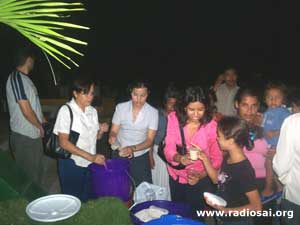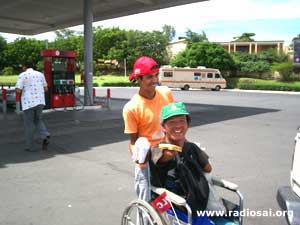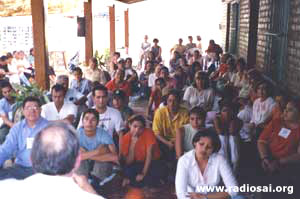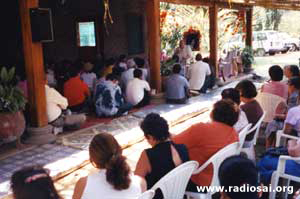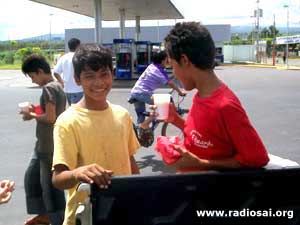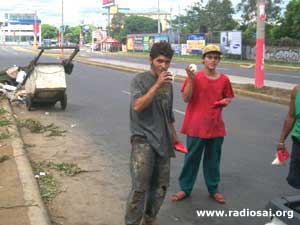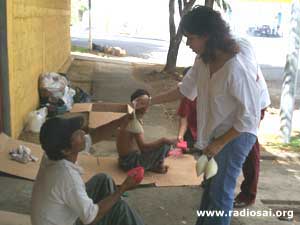 |
 |
 |
 |
Volume
4 - Issue 12 DECEMBER 2006 |
|
Two Tropical Paradises In our fascinating tour of the Sai Movement in the continent South America, we now move on to two small countries which have been blessed to come into the Sai fold. One is Honduras and the other Nicaragua, both of which lie next to each other in the middle of Central America. These picturesque paradises on the Caribbean sea are famed not only for their tropical beauty and breathtaking coastlines but also for their bio-diversity, vast natural resources and cultural richness.
Though on the opposite side of the world to India, it is amazing how Baba’s love has touched the lives of many ordinary people in these far off lands for many years now; and the number is increasing every day.
Swami has never set His foot outside India, except for a lone trip to East Africa in 1968, but mysteriously people feel His presence, experience His love and get drawn to Him; and for us to listen to these stories, it is equally enthralling. Before we get on with this exciting Sai journey, let’s know a little more about these two tiny nations which lie on the isthmus that connects the large landmasses of South America and North America. Honduras and Nicaragua – Central to Central American civilisation
Nicaragua is no less gifted, with eight percent of its territory protected as national parks or biologocal reserves. Home to many large rivers, it also has one of the largest lakes in the world, the Gran Lago de Nicaragua, which is unique in that it contains fresh water sharks and other fish species normally found only in salt water, that have adapted to sweet water. The Rio Escalante-Chacocente Wildlife Refuge (or Chacocente) contains one of the largest and most biologically diverse dry forests in both Nicaragua and the Pacific coast of Central America, and is also a protected nature reserve for turtles.
Thanks to their bio-diversity as well as the white sands, tall coconut palms, many islands and the easy going Caribbean atmosphere, these shores have always been a toast for tourists for all kinds – science enthusiasts, adventure-seeking daredevils and fun-loving holidaymakers seeking to ‘chill out’, especially from the busy cities of the Americans. Their Modern History and Dynamic Demography For approximately three centuries, Spain ruled the area as part of the Kingdom of Guatemala. In 1821, along with the rest of Central America, Honduras and Nicaragua declared independence from Spain, and became independent in their own right in 1838. Apart from Mestizos (mixed European and indigenous non-European ancestry), people of European descent, and a minority of East Asian and Middle Eastern origin, the newest ethnic addition to these countries is the Garifuna. Unlike other people of African descent who came to the Americas, these were never slaves.
The Garífuna live along the north coast in Honduras and in the islands in Nicaragua. With about nine percent of its population from Africa, Nicaragua has the second largest population of African descent in Central America after Panama. In spite of the tide of immigrants, the indigenous people of both these countries still thrive.
Tribes like the Chortí (Mayan descent), Pech or Paya, Tolupan or Xicaque, Lenca, Sumo or Tawahka, and Miskito exist even now, and maintain their languages in Honduras, while five percent of Nicaragua’s demography consists of Nahuatl-speaking Nicarao people of the western region after whom the country is named, and six other ethnic groups including the Miskitos, Ramas and Sumos along the Caribbean coast. For Them, Future is “God Willing” Though Hondurians (or Hondurenos as they like to call themselves in Spanish) and Nicaraguans are predominantly of Mestizo descent and of Roman Catholic faith, there are also several Evangelical denominations. While the Virgin of Suyapa, another name for Virgin Mary, is the patron saint of Honduras, the high point of Nicaragua's religious calendar for the masses is neither Christmas nor Easter, but La Purísima, a week of festivities in early December dedicated to the Immaculate Conception, during which elaborate altars to the Virgin Mary are constructed in homes and workplaces. Therefore, the similarity in culture, tradition, festivities between the two nations is evident, and this is furthered with Spanish being their common official tongue. Fascinating Capitals Once upon a time, this city was populated by fishermen and craftsmen, ruins of whose settlements can still be seen. Though Managua has seen the rise and fall of many political powers and survived two devastating earthquakes, it has proved to be a tenacious city. Today, harbouring nearly one-fifth of Nicaraguan population, it is considered to be the safest city in Central America and one of the safest cities in all of the Americas, surprisingly much more than many North American cities.
Though tourism remains an important sector in these Caribbean economies, thanks to their geographical location and biological diversity, Honduras is also rich in natural resources such as timber, gold, silver, copper, lead, zinc, iron ore, antimony, coal, and fish, and both these countries export bananas and coffee. Their Invaulable Asset – Their Good Hearts
With 500 islands and reefs on both coasts, Nicaragua is very beautiful and there are many volcanes which are active which attract a lot of tourists every year. But what is more noteworthy is the character of these people and their hospitality. Frank and open in expressing their opinions in a country which allows freedom of worship, Nicaraguans like Hondurans treats guests with a great deal of kindness and love. It is these priceless characteristics which has made them what they are today - tropical paradises on earth, and for many, suitable places to be reminded of God, even though they maybe seemingly obscure and not developed like the Americas. Therefore, it is no wonder that the first Honduran to visit Puttaparthi was as early as 1969, though the first Mexicans who came to see Sathya Sai Baba was in 1973. History of the Honduras Sai Organization
It was Miss Rosa Ravaneau, who was the first person from Honduras, to visit Bhagavan Baba in 1969. Originally from Tegucigalpa, the capital of Honduras, she was living in New York. She narrowly missed death or serious injury when, one day in 1969, her Volkswagen van rolled over in an accident. This brush with mortality prompted her to begin questioning herself, “What if I had died? What is this life all about? Am I wasting it without knowing why I am here?” These thoughts led her to read different spiritual texts and at one point her roommate remarked, “Why don’t you go to India, you’re reading so many books from there.” Rosa wanted to go to Russia, but when she called her travel agent, he told her about a $400 round trip available for India. This was too good to pass up. The Eventful First Journey An artist friend called and advised her to go to Goa and Puttaparthi, without mentioning Sai Baba. When Miss Ravaneau was traveling in India, she met a Mr. Gupta and his family in Madras (now Chennai). They were en route to Puttaparthi the next day and offered her the one space available in their car. Rosa recalled the name Puttaparthi from her friend and agreed to go along. The Gupta family were travelling in two cars and Rosa rode with the ladies, who did not speak English. Only Sri Gupta spoke English, but he was in the other vehicle.
So she came to Puttaparthi without any idea about Sai Baba, and arriving late at night found rooms in the village. In those days there were no facilities for visitors, people used the Chitravati River for bathing, the hill for a bathroom, and slept on the floor in a rented room in the village. No one sold mattresses, and food other than South Indian spicy fare was difficult to come by. The only thing in abundance were the mosquitoes. At that time, a total of five foreigners were at Prashanti Nilayam. When Miss Ravaneau arrived, she thought she made a mistake, but there were no buses or taxis, so she had to live with her supposed blunder. Soon however, she saw Swami as an enchanting personality. She wanted to talk to Him and approached Professor Kasturi (Baba’s biographer) while he was at his ancient typewriter. He explained it was up to Swami to call someone in. Rosa thought that if she could find Swami’s cook, she might help her get an appointment with Baba while He was eating. She found the cook in a tin hut behind the Mandir. The lady was very nice and said she would help. Over the following days, she told Rosa to come in the morning or afternoon and that Swami said He would see her. However, all the appointments were cancelled. Finally, she was escorted into a small room at the end of the Mandir where the lady indicated she was to wait. There was only one chair, so she sat down. Of course, it was Swami’s chair. She waited more than an hour until Professor Kasturi came to report that Swami was tired and had retired for the evening and would not be seeing anyone.
As she came out, she noticed one of the American boys staying there reading Howard Murphet’s, Man of Miracles. She asked to look at it, and when she saw, it was about Swami. She said, “Wow, this guy must be something if there is a book written about Him.” Then she opened the book and read that no one could visit Sai Baba without Him bringing them to His presence. This was too much for her, so she asked to borrow it, and retired to her room to read. The next day passed without an interview, but Rosa was reading avidly about Swami. That night she had a dream. She was riding in a taxi with Baba and He put a garland around her neck. The next day, a minor miracle occurred: a taxi arrived to drop off some passengers, so Rosa, feeling she had His blessing, left in it to return to the West. Maurice’s Mind is Metamorphosed She visited many more times in subsequent years and in 1972 came with her husband and mother-in-law to Whitefield to attend the first Summer Course in Indian Culture and Spirituality on invitation. Maurice, her husband, wore his hair long. After the first day of the Summer Course, Dr. Gokak, a senior devotee close to Bhagavan, called Maurice aside and told him how Indians were conservative and not used to western styles and men with long hair. He suggested it would be a nice gesture to get a haircut. At first Maurice thought this old fellow doesn’t understand or respect our culture. The next night, Dr. Gokak again asked him politely to trim his hair. However, Maurice was still in rebellion. But then the next day, the thought came that it would be an indication that he could become Swami’s devotee if he had his hairdo. So he had his head shaved and now looked like a monk. When he was walking in front of Swami’s residence, Swami came out on the balcony, looked at Maurice and said, “Very nice, very nice.”
That year the Summer Course was held in a big tent. After the course was over, Swami called Rosa, Maurice, and his mother for an interview, during which He materialized a small silver medal for Maurice’s mother. When they left the interview room, Rosa said, “What a cheap medal. He should at least have made something from Tiffany’s.” Next day, to their surprise, Swami called them in again. Rosa stood at the back as she was embarrassed about what she had said regarding the medal. “How did you like your mother-in-law’s medal?” - Swami Swami saw her immediately, and asked, “How did you like your mother-in-law’s medal?” Rosa said, “Oh, it is very beautiful Swami.” Then Swami waved his hand through the air as if to say, you don’t really mean that, but at the same time a similar medal flew across the room. Without realizing it, at that moment Rosa put her hand up and the medal landed in her palm. It was identical to her mother-in-law’s and she has it to this day. All these divine experiences instilled a lot of faith in Rosa and her husband and eventually they started a Sai Center in their apartment in New York and have been holding meetings there now for many years. The First Sai Centre in Honduras When Manuel was offered a job in Costa Rica, the family had to move, and so did the Sai Center, to the home of Jivaduck Samayoa. His wife Bernadette started Bal Vikas classes for the children, and Jivaduck, a dynamic devotee, took Swami’s message to other cities in Honduras. A center was started in San Pedro Sula, another in Tela, and also in La Ceba. At one point more than hundred devotees congregated for a retreat at the Lake, El Yojoa. An eleven-year-old girl from the Tela Sai Center, claimed to see Swami and that He gave her messages, such as the devotees should go to the hospital and do service. However, when Swami was consulted, He said He was not the one who appeared to her and sent her vibhuti prasad. It seems she liked the attention, but after taking Swami’s vibhuti the appearances stopped. Then Jivaduck hit the lottery, and won $80,000, which he used to bring his son to India to visit Swami and to add a large room to his home for the Sai Center.
This was a wonderful miracle for everyone to see. But then Jivaduck moved to Guatemala and Pepe Gonzalo Rodriguez graduated from the University and went back to Guatemala, so the Sai Organization was left with some staunch devotees such as Ada Jadeed, Lea Galinda, Manuel Chavez, Otto Weiss and Rafael Sosa, but without a central meeting place. For a time, the meetings were held in the home of Florencia Rodriguez, then in the home of Lea Galinda, and the apartment of Manuel Chavez. In 2005, a public meeting was held in San Pedro Sula, which was followed by regular study circles in the home of Rafael and Yamelth.
Ever Watchful Sai Ada’s sister was also a Sai devotee. She was visiting her two daughters who were studying in San Diego, California. One daughter, Diana, was driving on the freeway with her mother and sister in the back. The mother remembered that she had a photo of Swami with her which she wanted to give to Diana and took it out of her purse and passed it to Diana, who placed it on the seat. Soon after, the car went out of control and hit a concrete barrier at high speed. The vehicle was crushed.
The police came and called for emergency equipment. They needed acetylene torches to cut the three women out of the car, but all of them were safe without so much as a scratch. The police asked for Diana’s driver’s license, and when she opened her purse, there was Swami’s photo inside, even though it was on the seat before the crash. They all offered prayers of gratitude to Swami for saving their lives. A few days later they were in a supermarket and Diana ran into a friend. She introduced her mother and sister and they exchanged a few pleasantries. While saying goodbye, Diana’s mother put her hand out, as it is customary in the USA to shake hands when meeting someone. The lady was a clairvoyant, and when she touched the mother’s hand, she exclaimed, “You have just been saved from death by someone very powerful.” They then told her the story of what happened on the freeway a few days before. Now there is more good news for Honduras. Rosa and Maurice have retired and they are leaving New York to settle in Tegucigalpa and will take up leadership of the Sai Organization. The Organisation is growing steadily in this tiny nation and the devotees are engaged in lot of service and spiritual activities, stories of which we will bring you in a later issue of H2H, but for now let’s turn to Nicaragua and its wonderful Sai movement. How did Swami Come to Nicaragua?
About 1985, Norman Cuadra brought the first book on Swami in Spanish, “Sai Baba, El Hombre Milagroso” (Sai Baba: Man of Miracles) by Howard Murphet. He was hosting two radio programs at the time, called ‘Pirimids and Energy’ and ‘Our Next Horizon’, and he serialised parts of this book on both programs, which created a sensation in the country. One listener was Mrs Juana Domínguez, whose sister was living in El Salvador. When she was on a visit to her sister, she walked in front of a house where bhajans were in session. She went closer to listen, and they invited her inside. She became enthralled with the music and discovered the same book which Norman had referred to on his radio program. Juana started taking books and other materials to her home in Managua and that is how the first Sai Center was born in 1988. Later, Mr. John Behner and Mr. Nassin Mechaan, senior members of Sai Organisation from neighbouring countries, visited Nicaragua to hold public meetings, and other devotees from El Salvador went to help teach bhajans, start study circles and motivate service activities. Dreams and Realities One of the first devotees was Delmy Suarez, who relates a beautiful experience of how she discovered Swami. She had several dreams of a ‘person in an orange robe’ where He would raise His hand and say ‘Om Sai Ram’. She was left confused, unable to interpret the dreams. Then, one day around this time, she was invited to attend a public meeting and discovered that the person in her dreams was the theme of the conference. She was amazed to hear about the Leelas of the Lord and purchased some books and started assisting at the home of Mrs. Carmen de Solorzono.
Mrs Carmen de Solorzono discovered Sai Baba in 1994 from her sister who had travelled to India from her home in Venezuela. Carmen embraced Swami’s teaching from the very beginning after listening to her sisters experiences and reading about Him and soon opened her home for Sai meetings. This small Sai group started many service activities and Delmy Suarez along with her daughter started serving at a hospital every week. Slowly the glory of Sai spread in this triangle-shaped nation and soon Mrs. Carmen Murillo, the wife of the President of Niacaragua, became a frequent visitor to the Sai centre to buy books. Eventually, a public meeting was planned and many devotees as well as leaders of the organization from other countries came to participate in the event.
Treat of Sai Retreats From 2004, many devotees from Nicaragua travelled to El Salvador and attended the retreats with Dr. Sandweiss, Dr. Voleti, and Mr. Carol Bass – all very experienced and senior devotees of Bhagavan Baba. Norman Cuadra and Elena Murillo helped organize the groups who visited. Motivated by these meetings, the retreat in Managua was organized, following which a Sai Group was started in the home of Reina Cisneros. And it is this group which has taken up the service of feeding the homeless regularly. One very unique meeting which was held in 2005 was a two day retreat for the public. This retreat was a joint effort by the local organization and the office bearers of the Central Council of Sai Organisation in Latin America. As different aspects of Swami’s teaching were being presented, some newcomers were taken by surprise and they stayed for both days. This led to the opening of a new Sai group in Nicaragua. There is one experience that Mrs. Carmen de Solorzono narrates. One day she went to consult a lady doctor about her health and while she was sitting in the waiting room, she noticed a photo of Shirdi Sai Baba on the wall. The doctor was Mrs Elba Ubeda, a devotee of Shirdi Sai Baba, but she remarked that she had never heard of Sathya Sai Baba. Out of love for Swami, Carmen brought her some books, and very shortly Dr. Ubeda converted her waiting room into a Sai Centre where as many as forty people would meet weekly.
There were public meetings held recently (2006) at the Hotel Princess in Managua and in Granada which were well attended where even members of the clergy of the Catholic Church were present and asked several searching questions about Swami and His message. The film His Work on Baba moved many hearts and many Sai books were in demand. A major TV channel gave coverage to the meetings and two newspapers carried the message of love and peace of Baba. There are only increasingly encouraging signs of Sai’s teachings and message percolating into different segments of the society including the government. When eventually selfless service and pure love suffuses every nick and corner of Nicaragua, it would have truly transformed into a ‘paradise of peace and light’ on the high seas, linking not large landmasses but connecting hearts and building bridges of love. Dear Reader, this is only the beginning of the Sai story of these Central American countries. Tell us how you liked these at h2h@radiosai.org and we will be back with more Sai stories, service activities and sublime transformations happening in this part of the world in the coming issues. We are grateful to Mr. John Behner and devotees from both these central american nations for loving sharing us thier stories and helping us make this article. - Heart2Heart Team |
||||||||||||||||||||||||||||||||||||||||||||||||||||||||||||||||||||||||||||||||||||||||||||||||||||||||||||||||||||||
| You can write to us at : h2h@radiosai.org |
Vol 4 Issue 12 - DECEMBER 2006
|
Best viewed in Internet Explorer - 1024 x 768 resolution. |
DHTML Menu by Milonic. |

